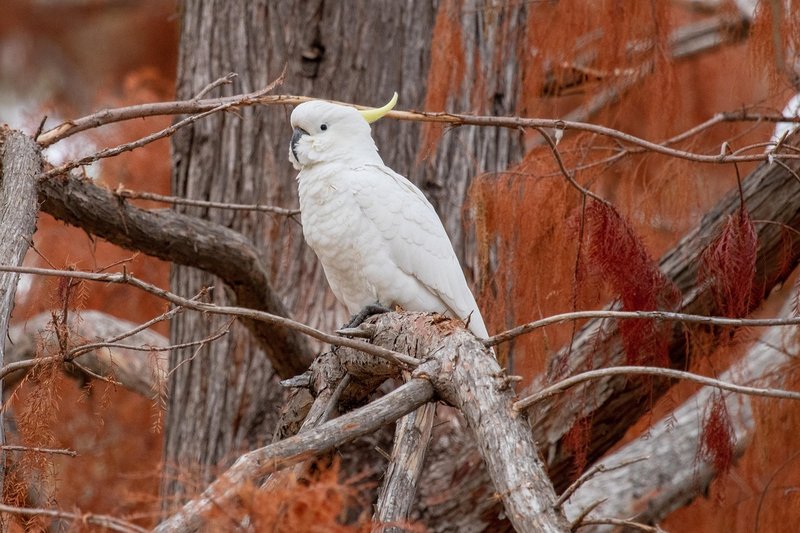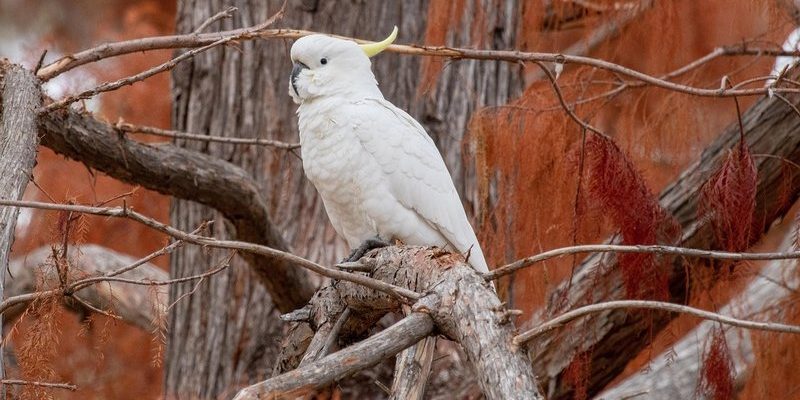
Imagine a vibrant party where everyone’s having a blast, but suddenly, the music stops. That’s a bit like what’s happening to cockatoos. Their natural habitats are disappearing, and their numbers are dwindling. Many people may not realize that these birds, while familiar in some regions, are in peril due to various human activities. Let’s explore the reasons behind their status and what we can do to help.
Understanding Cockatoos and Their Diversity
Cockatoos belong to the family Cacatuidae, which contains around 21 species. These birds are native to Australia, New Guinea, and nearby islands, with each species showcasing unique traits. For instance, the Sulphur-Crested Cockatoo is known for its striking yellow crest, while the Moluccan Cockatoo has a stunning orange hue.
The different types of cockatoos have adapted to various environments, from rainforests to woodlands. They typically prefer areas rich in native trees, where they can find food and nesting sites. Unfortunately, these habitats are increasingly under threat, which is a significant factor in their declining populations.
Some of the most endangered species include the Leadbeater’s Cockatoo and the Yellow-Tailed Black Cockatoo. They are not just beautiful creatures; they play essential roles in their ecosystems, such as seed dispersal and promoting tree growth. Losing them would not only affect biodiversity but also the overall health of their habitats.
The Threats Facing Cockatoos
Here’s the thing: cockatoos are facing a lot of challenges, primarily due to human activities. The main threats include habitat loss, illegal trapping, and climate change.
– Habitat Loss: As urban areas expand and agriculture grows, cockatoos find their homes destroyed. Logging and land clearing chop down the trees they rely on for food and shelter. Imagine being told you have to leave your cozy home and find a new place to live—it’s tough, and for these birds, it’s a life-or-death situation.
– Illegal Trapping: Some species are captured for the pet trade. While owning a cockatoo can seem appealing, the reality is that capturing them from the wild can devastate local populations. It’s like taking away the musical instruments from a band—no more beautiful tunes and harmony!
– Climate Change: Changes in climate patterns affect food availability, nesting sites, and even migration. For instance, if rainfall patterns shift, the trees that produce their food might not thrive as they used to. Without adequate nutrition and shelter, these birds struggle to survive.
The Conservation Status of Cockatoos
When we talk about whether cockatoos are threatened or endangered, we’re actually looking at classifications set by organizations like the IUCN (International Union for Conservation of Nature).
The IUCN categorizes species into different levels of risk:
– Least Concern: These species are doing well and are not facing immediate threats.
– Near Threatened: These species are close to meeting the criteria for threatened status.
– Vulnerable: These species are at risk of becoming endangered if threats continue.
– Endangered: These species face a very high risk of extinction in the wild.
Several cockatoo species fall into the *vulnerable* or *endangered* categories. For example, the Yellow-Crested Cockatoo is classified as critically endangered, meaning it’s facing an extremely high risk of extinction. Their numbers have plummeted due to habitat loss and illegal trapping.
Why Cockatoos Matter
You might be wondering why we should care about cockatoos beyond their beauty. Here’s the real deal: cockatoos, like many species, contribute to the health of their ecosystems. They help with seed dispersal, which promotes plant diversity.
When cockatoos eat seeds and fruits, they travel and later excrete those seeds, planting new life along their journey. If we lose cockatoos, we risk losing crucial plant species, which can lead to a ripple effect in their habitat—affecting everything from insects to larger animals.
Additionally, cockatoos have cultural significance in many regions, particularly in Indigenous Australian cultures, where they are celebrated in stories, art, and traditions. Losing these birds means losing a part of that rich cultural heritage as well.
What Can Be Done to Help Cockatoos?
So, how can we step in and help our feathered friends? There are several ways you can contribute to conservation efforts for cockatoos:
1. Support Conservation Organizations: Many groups focus on protecting cockatoos and their habitats. Donating or volunteering with organizations working on habitat restoration, education, and protection can make a difference.
2. Spread Awareness: Talking about cockatoos and their plight can lead to many new advocates. Sharing information with friends or on social media can raise awareness about the threats facing these birds.
3. Responsible Pet Ownership: If you’re considering a pet bird, adopt instead of buying from a pet store. Make sure the bird is a captive-bred individual rather than one caught in the wild.
4. Participate in Local Initiatives: Many communities have local conservation projects. Whether it’s planting trees or cleaning up areas, every little bit helps the overall environment.
5. Educate Yourself and Others: The more we know about the ecosystems around us, the better equipped we are to protect them. Learning about local wildlife, including cockatoos, can inspire a deeper appreciation and desire to care for them.
The Future of Cockatoos
Looking ahead, the future of cockatoos hangs in the balance. The combined efforts of conservation organizations, governments, and individuals can help turn the tide for these magnificent birds. The key is to act now—before it’s too late.
With continued habitat destruction and climate change looming large, it will take a collective effort to ensure that future generations can enjoy the sight and sounds of cockatoos. If we all pitch in, whether through small actions or larger initiatives, we can give cockatoos a fighting chance.
In wrapping this up, the question of whether cockatoos are threatened or endangered leads us to a complex but vital conversation about conservation. It’s clear these birds are struggling, but there’s still hope if we take action. By understanding the challenges they face and recognizing their importance in our ecosystems, we can work together to ensure a future where cockatoos continue to soar through our skies.
Their vibrant colors and spirited personalities remind us of nature’s beauty—and the responsibility we have to protect it. So, let’s take those steps, however small, to help secure a brighter future for cockatoos and all wildlife.

